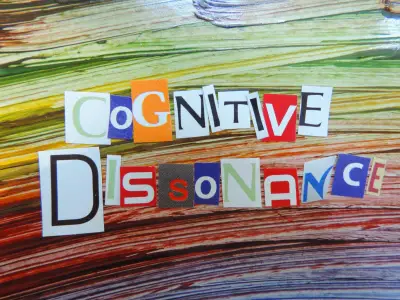Writing a mystery novel is an exciting challenge, offering the opportunity to craft an intriguing plot and keep readers hooked from start to finish. Whether you’re drawn to writing a murder mystery or a short, suspense-filled story, there are key steps you can follow to develop a captivating mystery that engages your audience.
In this guide, we take you through the essential steps for creating a compelling mystery novel, from brainstorming ideas to building tension and bringing your characters to life.
Jump to:
- What is a Mystery Story?
- Step 1: Choose Your Mystery Genre
- Step 2: Create a Complex, Relatable Protagonist
- Step 3: Build Your World and Setting
- Step 4: Create a Strong, Intriguing Crime
- Step 5: Introduce Red Herrings and Plot Twists
- Step 6: Develop Supporting Characters and Suspects
- Step 7: Use Mystery Writing Prompts for Inspiration
- Step 8: Create Suspense and Build Tension
- Step 9: Craft a Satisfying Conclusion
- Frequently Asked Questions
- Study Our Novel Writing Diploma for £29
Recommended for you!
Best SellersWhat is a Mystery Story?
A mystery story revolves around a central enigma or puzzle, usually involving a crime that needs to be solved. The key element is that something is hidden, whether it’s a missing person, a murder, or an unsolved crime, and the protagonist (often a detective or investigator) works to uncover the truth. The reader is often trying to solve the case alongside the protagonist, which keeps them engaged and eager to see how the puzzle fits together.
Step 1: Choose Your Mystery Genre
Before you begin writing, decide which type of mystery novel you want to create. The mystery genre is rich with variety, and each subgenre comes with its own set of conventions and expectations. Choosing the right one will shape how you approach the plot, characters, and overall tone of your story. Here are some popular types of mystery novels to consider:
- Murder Mystery: This is the classic mystery genre, often involving a detective or investigator who must solve a crime. Think of iconic works like Arthur Conan Doyle’s Sherlock Holmes or Agatha Christie’s Hercule Poirot.
- Cosy Mystery: A cosy mystery is lighter in tone and often more charming, featuring an amateur sleuth (usually someone with no formal training in law enforcement) who solves crimes, often in small, close-knit communities. A well-known example is Agatha Christie’s Miss Marple series.
- Psychological Thriller: In a psychological thriller, the focus shifts to the mental and emotional states of the characters, often creating a sense of unease or instability. The crime is often secondary to the exploration of the characters' minds, as seen in books like Gillian Flynn’s Gone Girl.
- Historical Mystery: A historical mystery is set in a specific historical period, with the time and place playing a key role in the narrative. For example, a mystery set in Victorian London might feature a detective investigating crimes using the limited technology available at the time.
Step 2: Create a Complex, Relatable Protagonist
Every mystery novel needs a detective or investigator, someone who will lead the investigation, unearth clues, and solve the crime. But your protagonist shouldn’t just be a detective for the sake of it. They need complexity and flaws that make them relatable.
Think about what motivates them to solve crimes: is it justice, curiosity, or a personal vendetta? They should also have weaknesses that make them human, such as a fear of failure, a complicated past, or emotional struggles. This will make them more relatable and keep readers invested in their journey.
Step 3: Build Your World and Setting

Whether your story takes place in a small town, a remote mansion, or a bustling city, the setting can heighten the tension and atmosphere, helping to drive the plot forward:
- Mysterious Locations: A secluded mansion, a dark alley, or a small village can all add to the atmosphere, making the reader feel the isolation or danger surrounding the investigation.
- Time Period: Historical mysteries can benefit from the context of their era; how crime, technology, and society worked in the past can play a significant role in solving the crime.
- Details Matter: The setting doesn’t just serve as background; it can influence the plot. A character might discover a clue in an old library, or the dark streets of a city could conceal a murderer.
Step 4: Create a Strong, Intriguing Crime
Think about the crime’s complexity; it should be puzzling enough to keep readers guessing, but not so difficult that they can’t eventually figure it out by following the clues. A murder mystery story often benefits from a crime that feels mysterious and unusual, with a unique motive behind it.
Start by asking questions:
- What happened? Was it a murder, a disappearance, or a robbery?
- Why did it happen? What was the motive behind the crime?
- Who could have done it? Create a list of possible suspects and think about their motivations.
Step 5: Introduce Red Herrings and Plot Twists

One of the key elements of a good mystery is the red herring, a clue or piece of information designed to mislead both the protagonist and the reader. Red herrings make the mystery more complex and prevent the reader from easily guessing the outcome.
As you develop your murder mystery plot, think about ways to throw the reader off track. This could be a suspect with a suspicious alibi or a misleading piece of evidence. The key is to create enough mystery without confusing the reader to the point of frustration.
Step 6: Develop Supporting Characters and Suspects
In a mystery, your suspects are almost as important as your protagonist. These characters should have motives and histories that make them seem plausible as potential culprits. The reader will be following the investigation, and each new suspect should add to the intrigue.
- Varied Backgrounds: Each suspect should have a clear motive and a distinct personality. Think about their personalities, their pasts, and their possible connections to the victim.
- Complex Relationships: Relationships between characters can add depth. Maybe the protagonist has a past with one of the suspects, or a witness has a hidden agenda.
Step 7: Use Mystery Writing Prompts for Inspiration
Sometimes, you might need a little push to get your ideas flowing. Mystery writing prompts can help spark your imagination and guide you towards unique murder mystery ideas. Here are some prompts to get you started:
- What if a detective stumbles upon an unexpected clue that changes the entire direction of the investigation? A small, seemingly irrelevant detail could hold the key to unlocking the mystery, sending the detective and the reader down an entirely new path.
- What if the victim left behind a cryptic message? A final, mysterious message from the victim can provide an intriguing twist. The message might be a riddle, a strange symbol, or a clue pointing toward an unexpected person.
- What if an ordinary, overlooked detail suddenly reveals the true identity of the killer? Sometimes, the smallest details, such as a forgotten object or an overlooked piece of evidence, can be the very thing that cracks the case wide open.
Step 8: Create Suspense and Build Tension

You want to create an atmosphere where readers feel anxious and eager to know what happens next. This is often done by pacing the story carefully, revealing just enough information at a time. To create suspense:
- Pace your reveals: Don’t give away the answer too soon; keep the reader guessing with small clues.
- Increase the stakes: As the investigation unfolds, raise the emotional stakes. Perhaps the detective becomes personally involved, or there’s a deadline to solve the case before something worse happens.
Tension is often amplified when characters make mistakes or the detective encounters obstacles that delay the resolution.
Step 9: Craft a Satisfying Conclusion
The resolution of a mystery novel is one of the most important parts of the story. You want to ensure that the murder mystery story ties together all the loose ends in a satisfying way.
- Reveal the killer: Make sure the culprit is believable and the clues lead logically to their identity. The reveal should feel earned, not contrived.
- Wrap up the investigation: Show how the detective pieces together the clues and solves the mystery.
- Emotional resolution: Ensure that the characters, particularly the protagonist, experience some sort of emotional closure, whether it’s a victory or a loss.
The end of your mystery should make the reader feel that the journey was worthwhile, with a surprising and satisfying solution.
Recommended for you!
Best SellersFrequently Asked Questions
How do I start a mystery novel?
To start a mystery novel, begin with a strong, attention-grabbing opening. Introduce the crime, or at least a hint of it, early on, and set up the mystery. Make sure the reader is immediately intrigued and wants to read on.
What is the structure of a mystery novel?
Mystery novels generally follow a three-act structure: setting up the crime, investigating the clues, and revealing the solution. Within this framework, you can weave in suspense, twists, and red herrings.
How many suspects should a mystery novel have?
There’s no fixed rule, but having 3 to 5 potential suspects is a common approach in mystery novels. Too many suspects can make it confusing, while too few can make the mystery too easy to solve.
How many pages should a mystery novel be?
Mystery novels generally range from 70,000 to 100,000 words, which translates to about 250 to 400 pages. This varies depending on the complexity of the plot and the depth of character development. Shorter mystery stories, like novellas, can be around 30,000-50,000 words.
Study Our Novel Writing Diploma for £29
If you're ready to take your mystery writing to the next level, Centre of Excellence offers a comprehensive Novel Writing Diploma Course. Whether you're just starting out or refining your craft, this course will guide you through every step of the writing process. Enrol now for just £29!












